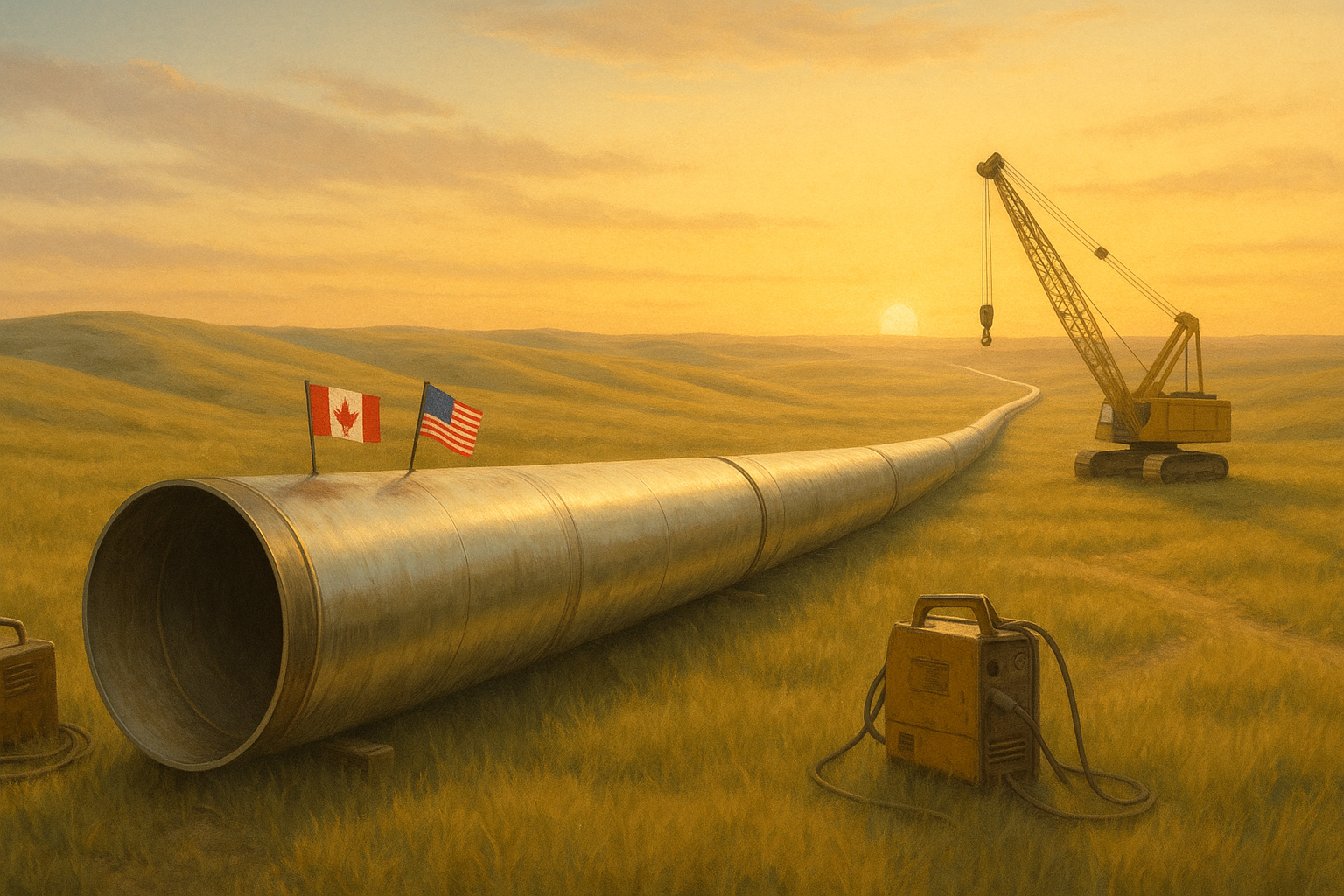The Keystone XL pipeline might be getting another shot at life. Again.
In what can only be described as the least surprising development of the transition period, Bank of Canada Governor Mark Carney has reportedly floated the idea of reviving the perpetually controversial pipeline during talks with President-elect Donald Trump.
I've covered energy policy for years, and nothing—absolutely nothing—embodies America's political pendulum quite like this particular stretch of proposed steel. The project has been killed and resurrected so many times it deserves its own horror movie franchise: "Keystone: The Pipeline That Wouldn't Die."
Let's back up a bit. When President Biden took office in January 2021, his very first executive action was to yank Keystone XL's permit, effectively driving a stake through the project's heart. TC Energy, after pouring billions into the venture, finally threw in the towel and filed a massive $15 billion trade claim against the U.S. government.
Game over, right? Well, not in Trump's America.
The thing about Keystone XL (and this is something I've observed covering three presidential administrations) is that it long ago transcended its actual physical purpose. What began as a rather mundane infrastructure project morphed into the ultimate symbol in America's energy culture wars.
For the right, this pipeline represents everything good and true: energy independence! Jobs! Freedom from the regulatory state! For environmentalists, it's the physical manifestation of climate catastrophe and corporate influence peddling.
The reality? Somewhere depressingly in the middle.
At its peak, Keystone XL would've created about 10,000 construction jobs—not insignificant!—but only about 50 permanent positions afterward. It would've transported roughly 830,000 barrels of oil daily through a country that gulps down approximately 20 million barrels every single day.
Important? Sure. Revolutionary? Hardly.
The climate impacts would've been real but modest in the grand scheme of things. Which makes you wonder: was all this political capital really worth spending on both sides?
What fascinates me most about the Carney-Trump conversation is what it reveals about regulatory whiplash in America. Imagine being in TC Energy's boardroom over the past decade. You commit billions to a project, navigate a labyrinth of permits and court challenges, only to watch everything vanish with a presidential signature... and then potentially roar back to life a few years later.
"The regulatory uncertainty is absolutely crippling for long-term infrastructure investments," explained one energy sector analyst I spoke with yesterday (who requested anonymity to speak freely). "Companies can handle a 'no'—it's the perpetual 'maybe' that kills them."
For Canada, the math is pretty straightforward. Their oil sands are expensive to extract and process. Without efficient pipeline transportation to refineries and global markets, much of that gooey resource stays economically stranded.
For Trump, bringing Keystone back from the dead fits perfectly into his "drill, baby, drill" worldview and scratches his perpetual itch to erase Biden's legacy. It's a ready-made win with his base that costs the government essentially nothing beyond some regulatory paperwork.
Here's the kicker, though (and this is where timing becomes critical): the global energy landscape has transformed dramatically since Keystone was first proposed way back in 2008. EVs are no longer rich people's toys. Renewable costs have plummeted. Even major oil companies have begun hedging their bets on fossil fuels.
Which brings us to the million-barrel question: Is reviving Keystone XL in 2025 about practical energy policy or just symbolic victory-taking?
One source close to the transition team put it bluntly: "Look, it's both. The president-elect genuinely believes in energy dominance, and this fits that vision. But yeah, there's definitely a 'told-you-so' element at play."
The conversation between Carney and Trump also highlights how other countries are already recalibrating their diplomatic approaches for Trump 2.0. Having watched the first Trump administration closely, foreign entities seem much more prepared this time around—identifying potential collaboration points that might appeal to Trump's transactional worldview.
In the end, the Keystone saga perfectly encapsulates our fractured politics. A pipeline that would neither save nor destroy the planet became totemic—a vessel into which we poured our deepest political identities and values.
And for infrastructure investors? The lesson remains painfully clear: in politically charged sectors, your returns will always be partially determined by who sits behind the Resolute desk.
That's a hell of a way to run an energy policy. But here we are... again.
